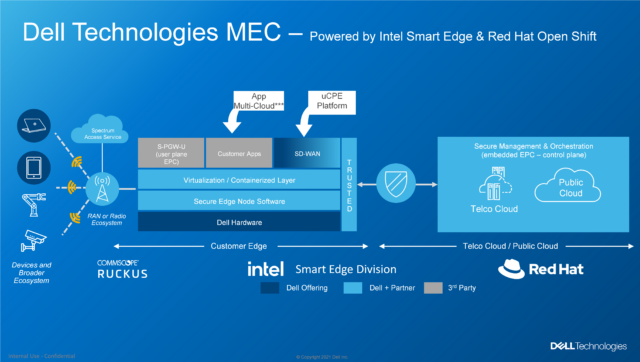This blog is co-authored by Jeff Shattuck, Telecommunications Consultant, and Marco Castanheira, Senior Telecommunications Consultant.
As 5G quickly rolls out and expands towards the enterprise market, a more open telecom business model will spark a wave of customer-centric innovation among communications service providers (CSPs).
5G’s low latency and high throughput will pave the way for new Internet of Things (IoT) and other edge applications, creating a vast landscape of unexplored opportunities for enterprise organizations. In addition, 5G’s cloud-native architecture enables the formation of a horizontal distributed computing platform that can consistently deliver the optimal balance between proximity to end-users and the cost benefits of centralized computing.
But today’s macro network does not support the capabilities required for enterprises to transform, so enterprises are turning to private mobility and multi-access edge computing (MEC). In fact, analysts predict private mobile networks will become the key enabler of the Industry 4.0 revolution. For example, they will allow manufacturers to deploy automated “smart” factories connected by secure, zero-trust mobile networks that will host innovative artificial intelligence and machine learning-based applications delivered at ultra-low latencies.
Complementing private mobility is MEC, an emerging technology which aims at converging telecommunication and IT services, providing a cloud computing platform at the edge of the radio access network (RAN). MEC offers storage and computational resources at the edge, with key advantages, such as the reduction in latency and reduced backhaul costs. MEC will enable the adoption of innovative services for enterprises and end-users (e.g., IoT/ M2M, the evolution towards Industry 4.0, 4K Ultra High Definition (UHD) video, and mobile gaming), opening a broader market for application developers and content providers.
At Dell Technologies, we believe communications service providers (CSPs) are ideally positioned to help enterprise organizations succeed with private mobility and MEC. CSPs have a vast physical infrastructure of geographically distributed points of presence (POPs) that can be repurposed to deliver edge computing resources, and they are already inside enterprise premises, providing IT connectivity and dedicated voice services. By leveraging their connectivity experience and existing POP infrastructure, CSPs are positioned to become the preferred provider for enterprises.
Further, CSPs can offer different go-to-market options, helping to reduce the complexity to implement MEC and private wireless. Aspects like spectrum utilization, service support, and RAN deployment could be delivered by CSPs, accelerating enterprise adoption. Finally, CSPs have developed an effective ecosystem of use cases based on MEC plus private wireless, addressing most enterprise verticals on the MEC front. They bundle these assets with an extensive transport network and an unparalleled ability to design and deploy RAN networks.
To help CSPs succeed in the enterprise market and drive enterprise adoption of private wireless and MEC, we’ve developed the Dell Technologies MEC 1.1.

Powered by Red Hat’s OpenShift Container Platform, Intel Smart Edge, and CommScope’s RUCKUS CBRS LTE Access Points, the solution delivers a cloud-native platform that allows CSPs to provide enterprises with an easy-to-deploy MEC and/or private wireless solution.
- The reference architecture includes the MEC (Multi Access Edge Compute) and a fully functional 3GPP compliant 4G Enhanced Packet Core.
- Alongside, a MEC controller can be delivered as PaaS on a cloud-native, Kubernetes-based telco platform (RH OCP) or be hosted in a public cloud.
- It fully supports CommScope’s RUCKUS CBRS LTE Access Points and its Spectrum Access System (SAS).
- An integrated orchestration and management console manage all the components in a single pane of glass.
Dell Technologies developed this reference architecture aiming to offer an open platform for CSPs and enterprises to accelerate the transformation of enterprise networks. We believe open solutions are critical for both CSPs and enterprise organizations, in that they eliminate lock-in obstacles and enable agile operational methods. As a result, all the solution components are industry-standard and have been pre-integrated and validated to reduce time to market and accelerate the adoption of innovative use cases.
